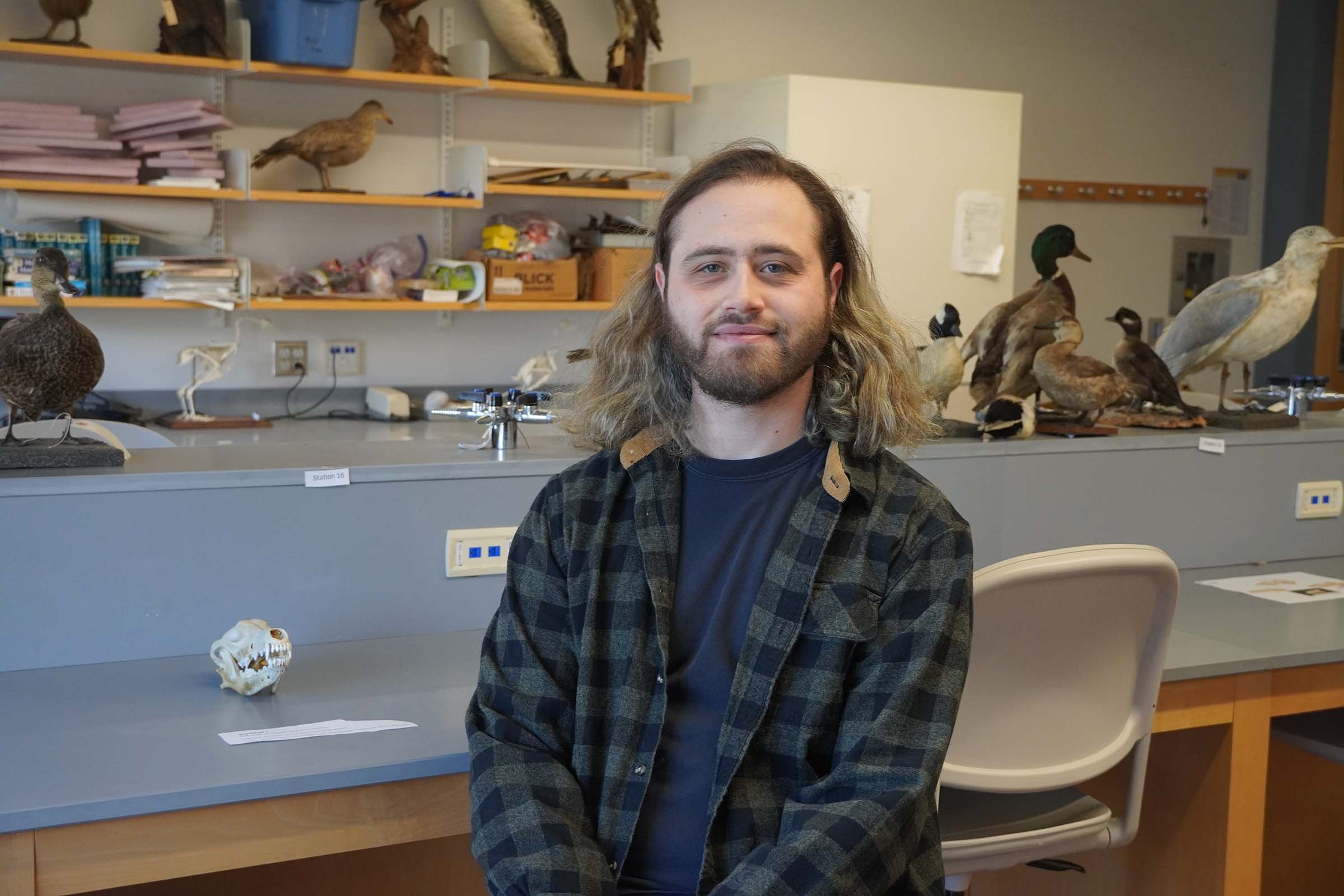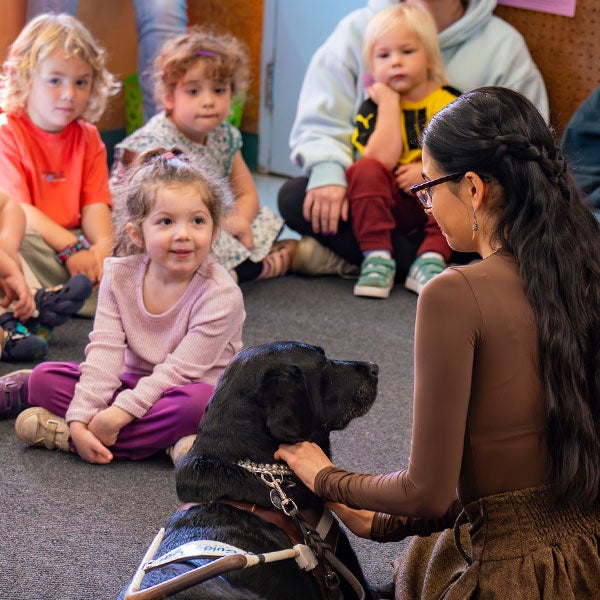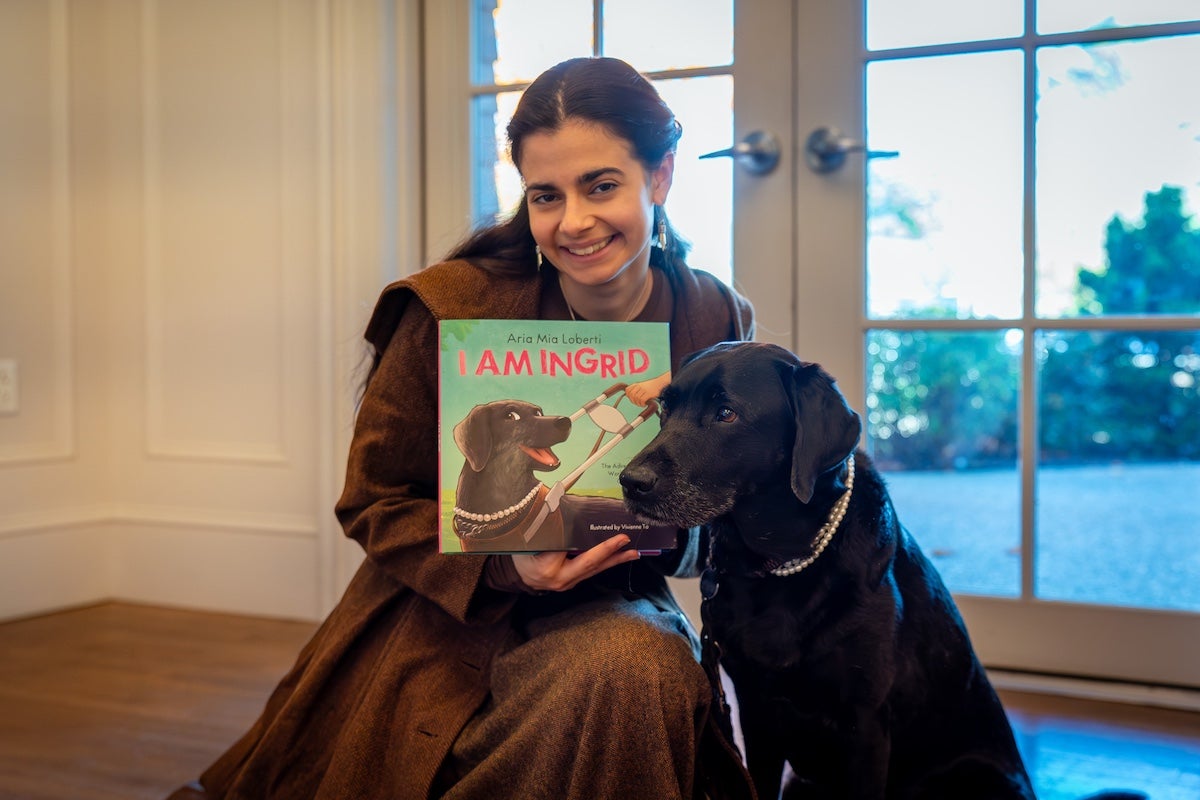Wolves at the coast: marine diets, ecosystem impacts
KINGSTON, R.I. – Oct. 23, 2025 – On Prince of Wales Island, Alaska, gray wolves are doing something unexpected: hunting sea otters. This surprising dietary shift appears to have notable implications for both ecosystems and wolf health, but little is known about how the predators are capturing marine prey. Patrick Bailey, a Ph.D. candidate at the University of Rhode Island, is researching these understudied behaviors of gray wolves.
Using a creative mix of approaches — including wolf teeth samples and trail cameras — Bailey is exploring how coastal gray wolves are using marine resources, what this suggests about their behavioral and hunting adaptations, and how these adaptations differentiate them from other wolf populations.

On land, gray wolves are known to play a vital ecological role because of their ability to regulate food webs. “We don’t have a clear understanding of the connections between water and land food webs, but we suspect that they are much more prevalent than previously understood,” says Bailey, a member of Sarah Kienle’s CEAL Lab in the Department of Natural Resources Science. “Since wolves can alter land ecosystems so dramatically, it is possible that we will see similar patterns in aquatic habitats.”

Teeth tell the tale
Now an endangered species, sea otters were abundant along the Pacific Coast until the fur trade during colonial expansion into the west decimated their numbers. As sea otter populations recover, wolves appear to be re-establishing a predator-prey relationship that may have existed long ago. Researchers are now investigating whether this relationship affects wolf behavior and the ongoing recovery of sea otters.
To better understand these dynamics, Bailey is conducting stable-isotope analysis on gray wolf teeth from museum collections and recently deceased wolves. Similar to tree rings, the wolves’ teeth contain layers of growth that reveal their dietary history. “If large enough, we can individually sample each of these growth rings to track an individual’s feeding patterns over time,” he says. “When we gather enough samples across individuals we can then analyze how prevalent these dietary trends are throughout a population.”
“Capturing and eating prey in the marine environment is very different from doing it on land,” adds Kienle. “We are super curious to see if these coastal wolves have behavioral adaptations that are different from terrestrial wolves.”
While there are over two decades of official reports of wolves consuming aquatic prey, many questions remain. “What hasn’t been explored, and what I am really interested in documenting, is how exactly wolves are able to capture sea otters,” Bailey says.
New tech, new clues
While the resolution of initial footage of wolf hunts was too low for detailed analysis, new trail cameras installed by Bailey on the Alaskan island this summer may finally capture the details of how wolves are hunting sea otters. “So far, we know that these wolves are consuming sea otters,” he says, “and we’re now staged to capture the details that have previously eluded us.” Bailey has trained a team of seven URI students to help analyze more than 250,000 images of wolf and sea otter activity captured since last December.
One of the challenges of conducting this research has been the wolves themselves, Bailey notes. Highly intelligent and elusive, they are notoriously difficult to study. “When you pair these traits with a landscape that is very rural and difficult to traverse, researching them becomes quite the undertaking,” Bailey says.
Prince of Wales Island was selected as the primary research site for Bailey’s fieldwork thanks to a collaboration with Alaska Department of Fish and Game biologist Gretchen Roffler and Michael Kampnich, a research technician who is local to the area. “I cannot emphasize enough how much these two have helped me,” Bailey says. “This project would not be possible without their input and guidance.”
“Kampnich has been an unbelievable resource for getting us acquainted with the island and its unique ecology,” he adds. “Working with locals is so important because they have decades of experience and perspective that we as outside researchers simply do not have.”
Roffler’s recent research on high levels of methylmercury, a toxic form of mercury, accumulated in sea otters signals potential concerns for how gray wolves’ diets might move that mercury up the food chain. Liver samples from aquatic gray wolves reveal mercury levels significantly higher than their inland counterparts — up to 278 times greater — raising concerns about long-term health effects. “Methylmercury accumulation can cause a suite of problems related to reproduction, body condition, and behavioral abnormalities,” Bailey notes.
East Coast directions
While currently focused on Alaskan wolves because resources are allocated to areas that have the highest probability of capturing data, Bailey hopes to eventually expand the behavioral aspect of his research to include the east coast.
“I’m including historical east coast wolves in a separate chapter of my dissertation comparing skull morphology between coastal and inland populations,” he notes. He’s currently working with skull specimens of wolves from regions of Canada, including Newfoundland and Labrador, shared with him by the Harvard Museum of Comparative Zoology.
In the meantime, his research is ongoing and data collection is expected to continue over the next several years. He hopes to return to Prince of Wales Island for additional fieldwork next summer.
This story was written by Anna Gray in the College of the Environment and Life Sciences.
Latest All News
- All about IngridAria Mia Loberti '20 visited the URI Child Development Centers to teach preschoolers about a guide dog's impressive skills and special relationship with their human, the subject of her book, I Am Ingrid.
- Aria Mia Loberti teaches URI preschool students impressive skills, special relationship of a guide dogKINGSTON, R.I. — Oct. 28, 2025 — How can your dog tell you what the letters on the buildings’ signs are? Why does your dog wear a special harness? Why do dogs poop and pee? University of Rhode Island graduate, actor, advocate, and newly published author Aria Mia Loberti ’20 patiently fielded myriad questions from […]
- Study by URI physics professor may lead to improved networked quantum sensingKINGSTON, R.I. – Oct. 28, 2025 – Could global positioning systems become more precise and provide more accurate details on distances for users to get from point A to point B? A study by University of Rhode Island assistant physics professor Wenchao Ge in collaboration with Kurt Jacobs, a physicist of quantum tech with the […]
- URI offers new online certificate in Community PlanningKINGSTON, R.I. – Oct. 27, 2025 – There is increasing workforce demand for community planners who are equipped to address complex environmental, social, and economic problems, and the University of Rhode Island’s Department of Landscape Architecture has designed a flexible new program to prepare both working professionals and current students to meet those needs. Offered […]
- University of Rhode Island faculty members named to Stanford University’s Top 2% Scientists 2024 listKINGSTON, R.I. – Oct 27, 2025 – Two dozen University of Rhode Island faculty members, across a broad range of disciplines, have been recognized by Stanford/Elsevier as being among the world’s top scientists and most influential researchers. Stanford University’s Top 2% Scientists list is considered the most prestigious in the world. The listing is based […]
- ‘Dr. IndigiNerd’ Lee Francis IV to share Native pop culture history at upcoming URI Humanities lectureKINGSTON, R.I. – Oct. 27, 2025 – Indigenous and Native people have played significant roles in global popular culture for more than four centuries. In that time, images and representations of Native American and North American Indigenous Peoples have permeated the collective consciousness around the world, from early portrayals of the “Noble Savage” through the […]













